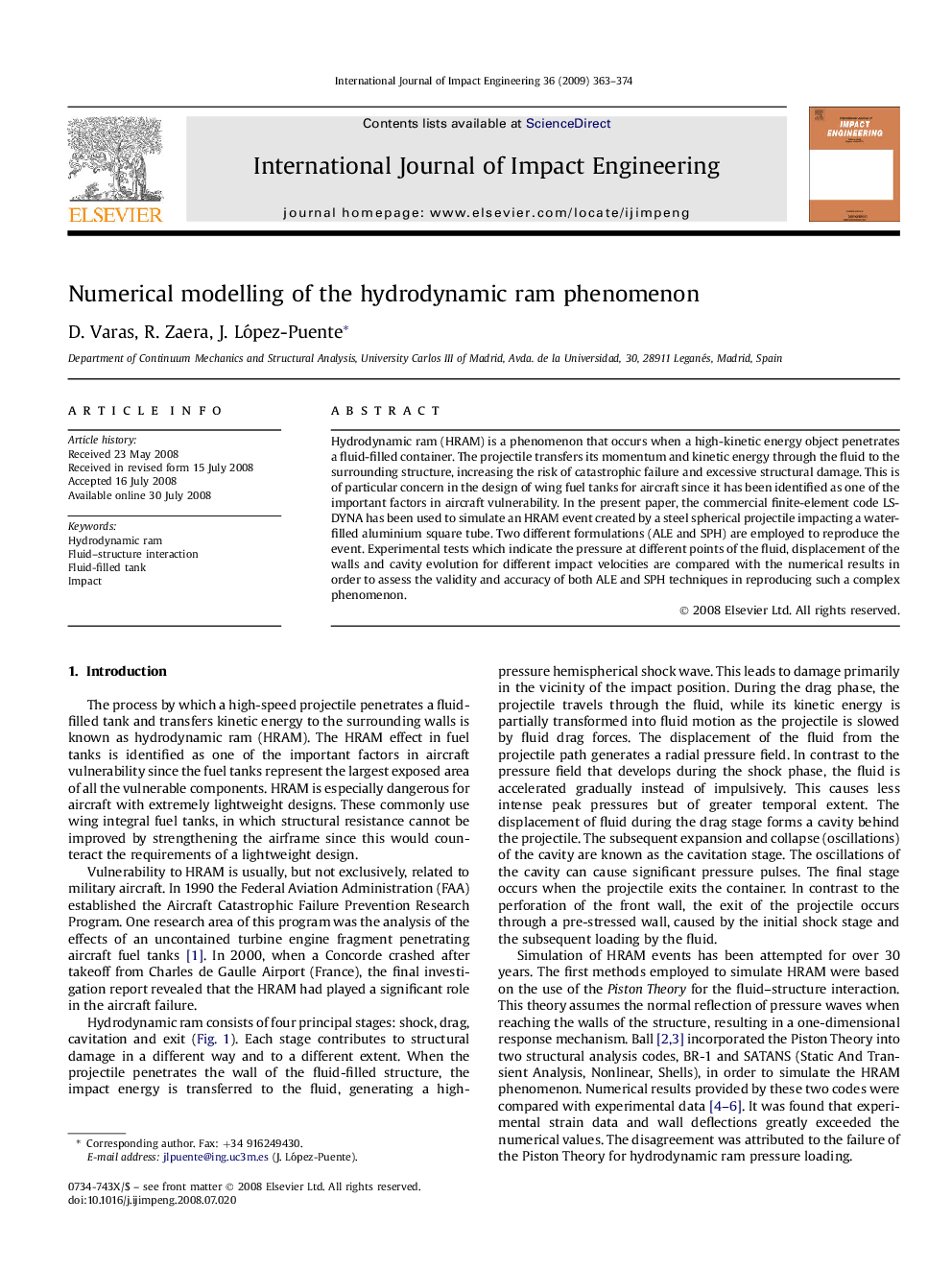| Article ID | Journal | Published Year | Pages | File Type |
|---|---|---|---|---|
| 779414 | International Journal of Impact Engineering | 2009 | 12 Pages |
Hydrodynamic ram (HRAM) is a phenomenon that occurs when a high-kinetic energy object penetrates a fluid-filled container. The projectile transfers its momentum and kinetic energy through the fluid to the surrounding structure, increasing the risk of catastrophic failure and excessive structural damage. This is of particular concern in the design of wing fuel tanks for aircraft since it has been identified as one of the important factors in aircraft vulnerability. In the present paper, the commercial finite-element code LS-DYNA has been used to simulate an HRAM event created by a steel spherical projectile impacting a water-filled aluminium square tube. Two different formulations (ALE and SPH) are employed to reproduce the event. Experimental tests which indicate the pressure at different points of the fluid, displacement of the walls and cavity evolution for different impact velocities are compared with the numerical results in order to assess the validity and accuracy of both ALE and SPH techniques in reproducing such a complex phenomenon.
